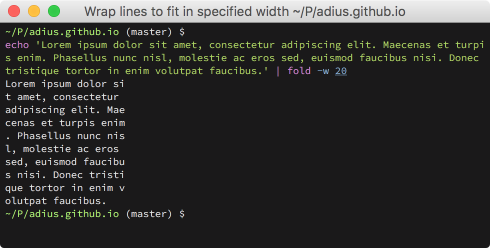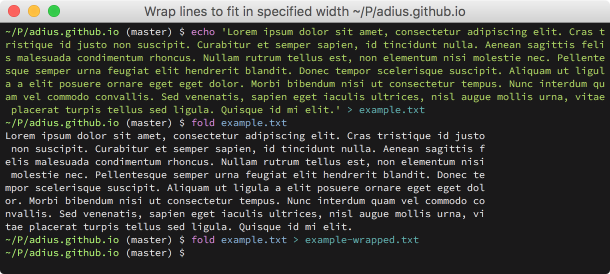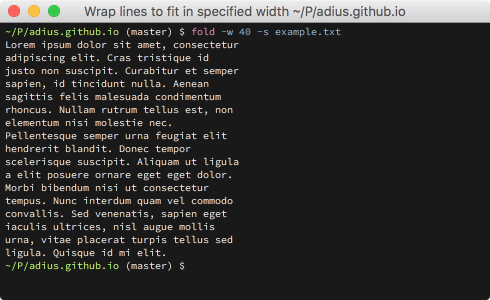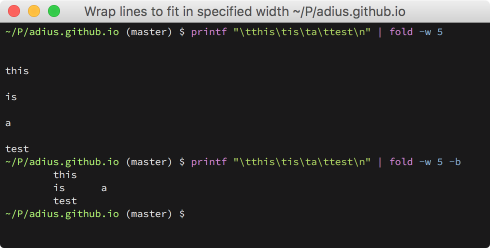fold - Wrap lines to fit in specified width
— 405 Words — 3 min

This is the second post in my Command Line Monday series.
On Unix-like operating systems there is a large number of
command line tools for text-processing.
One of this tools is called fold and helps you to wrap
lines to a certain length.
fold is part of the
Single UNIX Specification
and is therefore already pre-installed on every
unix-like operating system.
The official specification describes 3 command line flags and mandates reading support from input files and stdin.
The easiest way to use fold is to simply call it on a file.
fold example.txt
This will wrap every line of the file to the default line length for Unix terminals of 80 characters and print the wrapped line to stdout. From there it can easily be redirected into a new file or to another command line tool for further processing.

As you may have noticed, fold doesn't care about word boundaries and simply
cuts off words when the maximum number of characters is reached.
By specifying the -s flag fold can be set up to wrap the line
at the closest preceding whitespace character.

If you don't want to use the default terminal width for wrapping
you can set up a custom one with the -w flag and
also combine it with the -s flag:

And last but not least the command line flag -b lets fold count
bytes rather than characters.
This can be especially useful if the input contains tabs
and the tab characters shall be counted instead of the number of spaces they
represent.

As a final note I recommend to also check out the
GNU version of fold.
As always, it provides a saner syntax including long flags
(--width in addition to -w, --spaces for -s and --bytes for -b)
and is actively maintained by the GNU community.
Therefore it's also more stable and secure than other implementations.
If you have any comments, thoughts, or other feedback feel free to tweet me @AdrianSieber. Thanks for your help! 😊